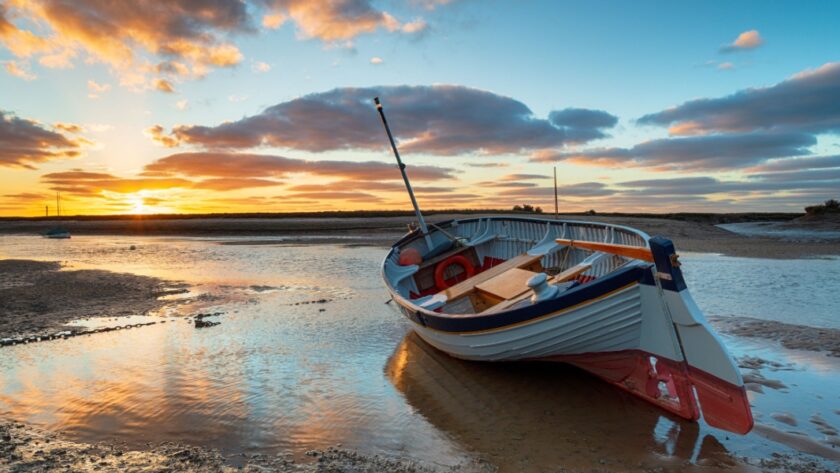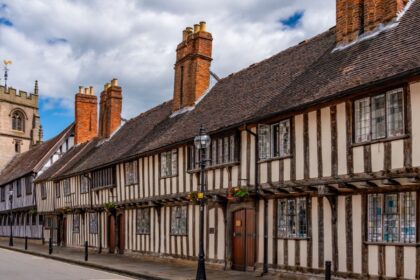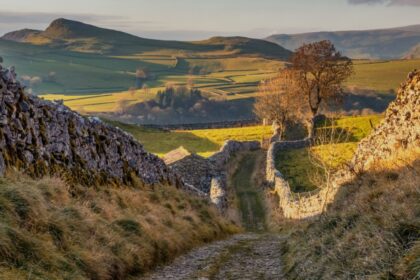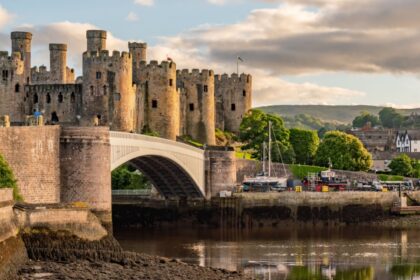The East of England is often politely overlooked in favour of its louder, more dramatic cousins. It doesn’t have the swagger of the North, the theatre of the South West, or the mountainous majesty of the Scots. But dismissing the East as “just flat fields and farming” is a bit like saying Monet just dabbled in water lilies. There’s more here than first meets the eye – you just need to slow down long enough to notice it.
This is a region defined by space. Not the “final frontier” kind, but the sort that stretches out in every direction, unhurried and unbothered. It’s a land of huge skies, where clouds parade grandly across the horizon and sunsets unfold in slow, cinematic glory. There’s something humbling about standing on a Fenland footpath, surrounded by silence and cabbage fields, watching weather drift in from what feels like Belgium.
The flatness, incidentally, is often exaggerated. True, the Fens are about as vertical as a pancake, and parts of Lincolnshire are so level they seem actively suspicious of hills. But venture into Suffolk, or the fringes of Essex, and you’ll find gently rolling countryside, woodland trails, and the sort of undramatic beauty that’s less likely to appear on Instagram but far more likely to make you breathe out and think, “Ah, this’ll do nicely.”
Let’s start with Cambridge, the obvious headliner
It’s the East’s academic jewel, all spires, cyclists, and cloistered courtyards. It’s the kind of place where every other building is a college, every third person is a genius, and the rest are tourists standing on bridges taking the same photo. You can go punting here – which sounds romantic until you try it – or simply wander through the backs, imagining yourself as a 19th-century poet, or possibly Stephen Hawking on a good day. It’s a city that feels clever without showing off, and old without being dusty.
Then there’s Norfolk, a county that seems to exist on its own wavelength
The roads here are long and wiggly, the towns endearingly eccentric, and the accents so wonderfully musical they should be bottled and sold as a regional delight. The Norfolk Broads, Britain’s answer to Venice if Venice had more reeds and fewer gondoliers, is a labyrinth of lazy rivers and lakes where kingfishers dart and holidaymakers drift along in narrowboats with expressions of mild confusion and quiet contentment. Towns like Wymondham and Holt are packed with antique shops and cafés where everything comes with a side of cake, and Norwich, the county’s cathedral-topped capital, is a pleasing mix of cobbled streets, literary history, and pubs with names like The Murderers (yes, really).
Suffolk is Norfolk’s slightly quieter, bookish neighbour
All half-timbered houses and winding lanes. It’s home to Constable Country, where the painter captured the light so perfectly you’ll look at a haywain and feel oddly emotional. Villages like Lavenham seem frozen in time (but with better coffee), and Aldeburgh offers pebbly beaches, fresh fish, and a concert hall in a converted malthouse that hosts world-class music in a town with one high street. It’s the sort of place that attracts poets, painters, and the slightly eccentric, and frankly, that only makes it better.
Then there’s Essex, which suffers from a chronic image problem
Largely the result of reality TV and a national habit of sneering at anywhere that doesn’t immediately shout “quaint.” But if you skip the headlines and head for the coast, the countryside, or even the bits of Chelmsford not populated by nightclub bouncers, you’ll find a county with real depth. There are salt marshes, ancient woodlands, Saxon churches, and seaside towns like Mersea Island, where the oysters are famous and the tide sometimes cuts you off from the rest of the world – which, depending on the day, may be precisely what you want.
Bedfordshire and Hertfordshire round out the region
Often considered commuter belt, but full of quiet charm if you take the time to explore. You’ll find elegant gardens, stately homes, and towns that manage to be both comfortable and slightly peculiar (in the best way). St Albans is a Roman city that likes to remind you of it at every opportunity – and fair enough, too – while places like Woburn and Hitchin have a kind of gentle self-confidence that makes you feel instantly at home.
The East isn’t showy. It doesn’t grandstand. It doesn’t need to. Its appeal is in the softness of the landscape, the unfolding quietness of the coast, the way villages appear suddenly in dips in the land, like secrets the region’s not quite ready to share. It’s in the way every town seems to have a Saturday market, a Victorian bandstand, and a local who will tell you – without irony – that this is the best place in England. And after a slice of homemade cake and a stroll through a field full of poppies, you might just agree with them.
It’s the kind of place you don’t fully appreciate until you leave – and then spend weeks thinking about the way the light hit the fields at five o’clock, or the silence on a footpath at the edge of nowhere, or the elderly man in a cap who gave you directions, then decided to walk with you just in case.
East of England may not shout. But it whispers something lovely, if you’re listening.





